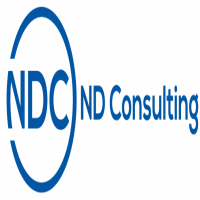Yardi Voyager Implementation for Enterprises: A Complete Guide

Strong 8k brings an ultra-HD IPTV experience to your living room and your pocket.
Managing large property portfolios requires sophisticated solutions that can streamline operations, deliver powerful analytics, and support business growth. For many enterprises in the United States, Yardi Voyager has become the backbone of property management. Implementing such a comprehensive platform is a significant undertaking, but with the right approach, it can transform how an organization operates.
This article provides a detailed look at Yardi Voyager implementation for enterprises, covering the essential steps, common challenges, best practices, and what organizations can expect throughout the process.
Understanding Yardi Voyager
Yardi Voyager is an integrated, cloud-based property management and accounting platform designed to handle complex portfolios. Enterprises choose Voyager because it supports a wide range of property types, from multifamily and commercial real estate to affordable housing and mixed-use developments. The system is known for its scalability, robust reporting, and compliance features.
For large organizations, Voyager is more than a software platform. It becomes a central hub that connects teams, automates processes, and provides real-time insights for better decision-making.
The Importance of Careful Implementation
Transitioning to Yardi Voyager is not a one-size-fits-all process. Each enterprise has unique requirements, existing workflows, and legacy systems. A well-planned implementation is essential to maximize the platform’s potential and avoid disruptions.
Enterprises that invest in a careful implementation process typically see greater adoption among staff, fewer errors, and a faster return on investment.
Key Phases of Yardi Voyager Implementation
Implementing Yardi Voyager for an enterprise typically involves several distinct phases. Here is an overview of the most important steps:
1. Project Planning and Needs Assessment
The first step is to define project goals, identify key stakeholders, and assess the current state of operations. This phase includes:
- Gathering business requirements: Understanding what the organization needs from Voyager, such as specific reporting capabilities, integration with other systems, and regulatory compliance.
- Setting a timeline and budget: Establishing realistic deadlines and cost expectations.
- Assebling a project team: Including IT professionals, property managers, accountants, and executive sponsors.
A clear plan helps align everyone’s expectations and keeps the project on track.
2. Data Migration and System Integration
For most enterprises, migrating existing data into Yardi Voyager is a critical step. This includes property records, lease agreements, financial data, and tenant information.
- Data mapping: Reviewing and organizing data from legacy systems to ensure it fits Voyager’s structure.
- Data cleaning: Removing duplicates, correcting errors, and standardizing formats.
- Integration: Ensuring Voyager connects seamlessly with other business systems, such as CRM platforms, payment processors, and reporting tools.
Accurate data migration is key to a successful implementation and sets the foundation for reliable operations going forward.
3. System Configuration
Every enterprise has unique processes and reporting requirements. Yardi Voyager allows for extensive customization:
- User roles and permissions: Defining who can access specific modules and data.
- Workflow automation: Setting up automated tasks for routine operations, such as rent posting and invoice approvals.
- Custom reports: Building reports tailored to business needs.
Configuring the system to mirror real-world processes ensures teams can use Voyager efficiently from day one.
4. Training and Change Management
Implementing new technology in a large organization often meets with resistance. Comprehensive training and ongoing support are crucial:
- Training sessions: Offering hands-on instruction for staff at all levels, covering day-to-day tasks and advanced features.
- Documentation: Providing easy-to-follow guides and reference materials.
- Change management: Communicating the benefits of Voyager, addressing concerns, and gathering feedback.
Successful adoption depends on staff feeling confident and supported throughout the transition.
5. Testing and Quality Assurance
Before going live, enterprises should conduct thorough testing to ensure the system works as intended:
- System testing: Checking that all modules function correctly and that integrations operate smoothly.
- User acceptance testing: Allowing end-users to run through real-world scenarios and identify any issues.
- Issue resolution: Fixing problems quickly before full deployment.
Quality assurance helps prevent disruptions after launch and builds trust among users.
6. Go-Live and Post-Implementation Support
The final phase is the official rollout. Even with careful preparation, there may be unexpected challenges:
- Go-live support: Having experts available to address issues in real time.
- Ongoing assistance: Offering continued support, updates, and optimization as business needs evolve.
Enterprises that plan for post-launch support are better positioned to handle challenges and realize the full benefits of Yardi Voyager.
Common Challenges in Implementation
While Yardi Voyager offers robust capabilities, implementing it at scale comes with challenges:
- Complex data migration: Ensuring data accuracy and completeness can be labor-intensive.
- Change resistance: Teams accustomed to legacy systems may be slow to adopt new workflows.
- Integration with third-party systems: Custom integrations can require additional development and testing.
- Training needs: Large organizations often need to train dozens or hundreds of users, requiring a structured approach.
Recognizing these challenges early allows organizations to allocate resources and plan accordingly.
Best Practices for Enterprise Implementation
To ensure a successful Yardi Voyager rollout, enterprises can follow these best practices:
- Engage stakeholders early: Involving representatives from all affected departments builds buy-in and uncovers important requirements.
- Invest in project management: Dedicated project managers keep the implementation on schedule and address issues quickly.
- Prioritize data quality: Starting with clean, accurate data minimizes headaches later on.
- Customize training: Tailoring instruction to different roles helps staff learn what’s most relevant to them.
- Monitor progress: Setting benchmarks and tracking progress ensures the project stays on course.
Benefits of a Successful Implementation
When implemented correctly, Yardi Voyager delivers significant advantages for enterprises:
- Centralized operations: Unifying property management, accounting, and reporting in one platform increases visibility and efficiency.
- Automation: Reducing manual tasks frees staff to focus on high-value activities.
- Improved compliance: Automated checks and reporting help organizations stay current with changing regulations.
- Scalability: Enterprises can manage more properties, portfolios, and markets as they grow.
- Better decision-making: Real-time insights enable faster, more informed business decisions.
The Role of Implementation Partners
Many enterprises choose to work with experienced Yardi consultants or implementation partners. These experts can help:
- Navigate complex data migration
- Develop custom integrations
- Provide training and ongoing support
- Troubleshoot issues as they arise
Engaging with a trusted partner can speed up deployment and reduce risk.
Conclusion
Yardi Voyager implementation for enterprises is a major undertaking, but it delivers lasting benefits when managed with care. By focusing on careful planning, data quality, user training, and ongoing support, organizations can turn Voyager into a strategic asset. As property management continues to evolve in the United States, platforms like Yardi Voyager help enterprises operate more efficiently, stay compliant, and make smarter decisions.
Note: IndiBlogHub features both user-submitted and editorial content. We do not verify third-party contributions. Read our Disclaimer and Privacy Policyfor details.


